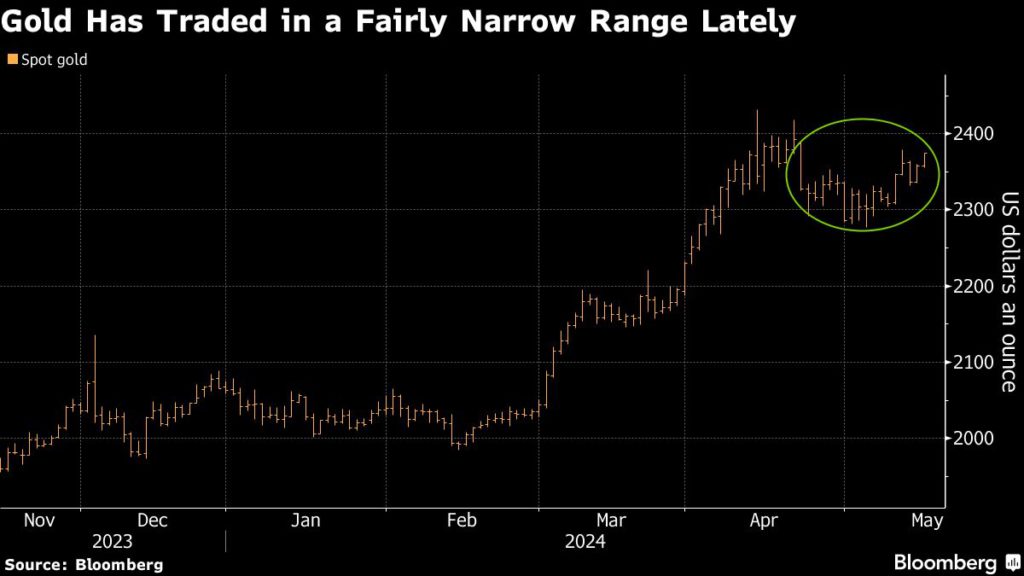
Gold climbed to a near one-month peak on Wednesday after new data in the US showed ebbing inflation and weaker retail sales, boosting the chances of a Federal Reserve rate cut.
Spot gold gained 1.1% to $2,384.76 per ounce by 11:25 a.m. ET, its highest since April 21. US gold futures were up 1.2%, trading at $2,387.20 per ounce in New York.

The precious metal has traded in a narrow range over recent weeks, following a blistering rally that saw it reach a record high in mid-April.
Still, prices are up about 14% this year, with gains underpinned by central bank buying, heightened geopolitical risks and consumer demand in China.
Bullion has also remained strong despite the anticipated timing of the Fed’s pivot being pushed back.
The latest set of US economic data has provided some relief for policymakers looking to start cutting interest rates this year.
Traders are now pricing in about a 69% chance of a rate cut in September, according to the CME FedWatch tool.
A measure of underlying inflation cooled in April for the first time in six months, with the so-called core consumer price index — which excludes food and energy costs — increasing 0.3% from the previous month.
The CPI data “could be an early indication that over time inflation will cool and the Fed will make its first interest rate cut,” said Phillip Streible, chief market strategist at Blue Line Futures, in a Reuters note.
Separate data out Wednesday showed retail sales stagnated in April, indicating high borrowing costs and mounting debt are encouraging greater prudence among consumers.
The potential economic weakness would benefit gold, which can be a hedge against financial stress. But for it to reach a fresh record, “we need more clarity on the number of rate cuts given its potential positive impact on ETF demand,” said Ole Hansen, head of commodity strategy at Saxo Bank AS.
Investors remain net sellers of gold exchange-traded funds so far this year, with total holdings down 5.9%, according to data compiled by Bloomberg.
(With files from Bloomberg and Reuters)